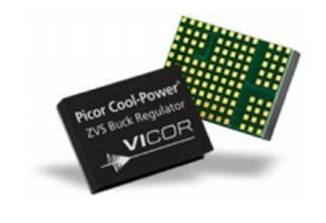The energy storage device in a forward converter is positioned on the rear BUCK inductor, making the forward transformer less complex compared to a Flyback transformer. Its main functions include voltage and current conversion, electrical isolation, and energy transfer. When designing a forward transformer, engineers typically start by analyzing the BUCK inductor located at the secondary side of the transformer. The input voltage to this inductor is the secondary output voltage of the forward transformer minus the forward voltage drop across the rectifier diode. Hence, the forward power supply can be considered an isolated version of a BUCK converter. This section will cover aspects such as the selection of primary and secondary turns, magnetic reset, duty cycle and turns ratio, other reset methods, losses and EMI, and the design of the forward transformer.

Choice of Primary and Secondary Turns
Taking a three-winding reset forward transformer as an example, once the turns ratio is determined, the next step is to calculate the number of primary and secondary turns. Some engineers believe that fewer turns are better for the forward transformer, assuming it remains unsaturated under full load. However, this is a misconception. The number of turns directly affects the primary inductance, which determines the magnitude of the excitation current. This current does not contribute to energy transfer but still consumes power, thus affecting efficiency. If the number of turns is too small, the change in magnetic flux density (ΔB) increases, potentially leading to core saturation if the air gap is not properly balanced.
Magnetic Reset
Whether it's a single-tube or double-tube forward configuration, magnetic reset is essential. Reset currents play a crucial role in demagnetizing the core. If the reset current is too small, the transformer’s parasitic capacitance and leakage inductance may interfere with the reset process. After the primary MOSFET turns off, the primary winding generates a reverse voltage, causing a reset current to flow through the reset winding. In high-power applications, adding a small air gap helps reduce leakage inductance and improve reliability. Without an air gap, the large primary inductance results in a smaller reset current, which can lead to core saturation under heavy loads.
Duty Cycle and Turns Ratio
The forward converter's duty cycle is primarily determined by the secondary BUCK circuit. In continuous conduction mode (CCM), the output voltage is given by Vo = Vin × D, where Vin is the input voltage to the BUCK inductor (the transformer’s secondary output voltage minus the rectifier’s forward voltage drop). Knowing the output voltage allows us to determine the turns ratio. It is recommended that the duty cycle should not exceed 0.5 to ensure proper operation and avoid excessive stress on components.
Other Reset Methods
Some transformers reset without an additional reset winding. Alternative methods like RCD snubbers, LCD circuits, or active clamps can be used. Resonant reset techniques also exist, using the magnetizing inductance and MOSFET junction capacitance. These methods require careful calculation and often involve adding an air gap to the transformer. The reset current is usually small, resulting in minimal heat generation, making them suitable for inner-layer windings.
Loss and EMI
Hard-switched circuits have inherent switching losses, especially at higher frequencies. While increasing frequency reduces the number of turns and allows for smaller transformers, it also increases switching losses and EMI. Proper thermal management and layout design are critical to maintaining reliability. The choice of components, such as ultra-fast recovery diodes, can significantly impact performance and reduce voltage spikes during reset.
Forward Transformer Design
Designing a forward transformer involves selecting the right core and bobbin. The AP method (core area product) is commonly used to estimate the required core size based on power, frequency, and magnetic flux density. However, actual designs often require adjustments due to practical constraints. Factors such as leakage inductance, distributed capacitance, and winding layout must be carefully considered. Additionally, the choice of wire diameter depends on RMS current rather than peak or average values, ensuring efficient and reliable operation under various load conditions.
pcb board for led lights,Led Pcb Assembly,flexible pcb smt assembly,consumer electronics PCB
Dongguan Jinglin Communication Technology Co., Ltd. , https://www.jlpcba.com